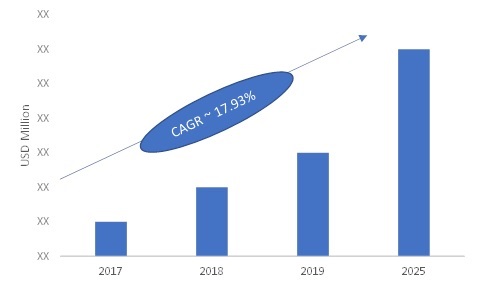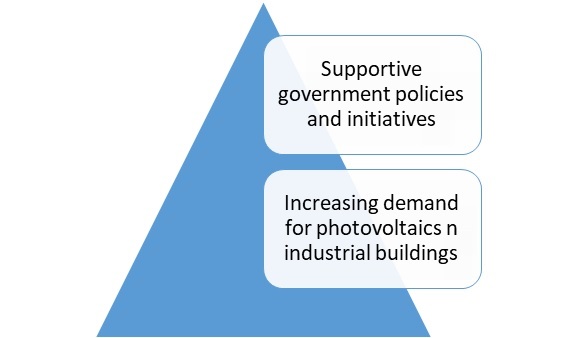Pune, India, July 2020, MRFR Press Release/- Market Research Future has published a Half-Cooked Research Report on the Global Building Integrated Photovoltaics Market.
Building Integrated Photovoltaics Market Highlights
Global Building Integrated Photovoltaics Market is projected to be valued at USD 77,761.5 Million, with 17.9% CAGR during the forecast period, 2022–2030. Building integrated photovoltaics refers to the integration of photovoltaics wherein the PV elements become an important part of the buildings in which they are installed. The PV specialists all across the globe are developing ways of incorporating solar electricity in commercial buildings. Building integrated photovoltaics consists of photovoltaics models such as roofs and façades. It also offers savings in PV materials and electricity costs.
Browse In-depth Details [Table of Content, List of Figures, List of Tables] of Building Integrated Photovoltaics Market Research Report
Global Building Integrated Photovoltaics Market, 2022–2030
In 2019, Asia-Pacific dominated the building-integrated photovoltaics market in terms of share: MRFR
The global building integrated photovoltaics market has been segmented into five regions, namely, Asia-Pacific, the Middle East & Africa, Europe, North America, and South America. Asia-Pacific is expected to hold the largest share of the market during the forecast period. This is primarily because countries in the region are extensively focused on developing renewable energy sources to reduce carbon emissions. In Asia-Pacific, China held the largest market share in 2019 due to extensive government support to introduce renewable energy sources. While the building integrated photovoltaics market is expected to grow at the fastest CAGR in India and China during the forecast period due to initiatives for the policies and programs related to renewable energy generation and increasing awareness regarding the construction of green buildings. In North America, the US held the largest share in the market and is expected to grow at the fastest CAGR during the study period, due to the policies that are framed to expand the use of clean fuels for energy requirements, especially in solar and wind energy industry. In Europe, Germany held the largest share of the regional market in 2019 and is projected to grow at the fastest rate during the study period, primarily due to the increase in the demand for integrated residential solar installations. In the Middle East & Africa, the UAE is expected to be one of the leading country-level markets in the region for building integrated photovoltaics.
The global building integrated photovoltaics market has been segmented based on product, application, and technology. Based on product, the global market is divided into roofs, wall integrated solutions, glass, façade, and others. The roof segment is expected to hold the largest share of the market and grow at the fastest rate during the study period. Based on application, the global building integrated photovoltaics market is segmented into industrial buildings, commercial buildings, and residential buildings. The industrial segment is expected to grow at the fastest rate during the forecast period due to the increasing need for renewable cost-effective power sources. Countries such as Japan, China, the US, and India, among others, are entering into agreements to generate power through photovoltaics. Based on technology, the global building integrated photovoltaics market has been divided into crystalline silicon and thin-film technologies. The crystalline segment is expected to hold the larger share within the global building integrated photovoltaics market.
Global Building Integrated Photovoltaics Market is expected to grow at 17.9% CAGR during the forecast period.
Drivers
Scope of the Report
This report provides an in-depth analysis of the global building integrated photovoltaics market, tracking three market segments across five geographic regions. The report studies key players, providing a five-year annual trend analysis that highlights the market size and share for North America, Europe, Asia-Pacific, South America, and the Middle East & Africa. The report also presents a forecast, focusing on the market opportunities for the next five years for each region. The scope of the study segments the global building integrated photovoltaics market by product, application, technology, and region.
- Product
- Roofs
- Wall integrated solutions
- Glass
- Façade
- Others
- Application
- Industrial buildings
- Commercial buildings
- Residential buildings
- Technology
- Crystalline silicon
- Thin-film technology
- By Region
- North America
- Asia-Pacific
- Europe
- Middle East & Africa
- South America
Key Players
The Key Players operating in the Global Building Integrated Photovoltaics Market are Solaria Corporation (US), Ertex Solartechnik GmbH (Germany), Canadian Solar Inc. (Canada), Scheuten Solar (The Netherlands) Wurth Solar (Germany), Dow Solar (US), Suntench Power (China), Belectric (Germany), Carmanah Technologies Corporation (Canada), Dyesol Ltd. (Australia), Hanergy Holding Group Limited (China), Tesla Inc. (US), NanoPV Solar Inc. (US) and ML System (Poland).
Leading companies partner with us for data-driven Insights
Kindly complete the form below to receive a free sample of this Report
| Base Year | 2020 |
| Companies Covered | 15 |
| Table & Figures | 1 |
| Pages | 111 |
Certified Global Research Member


Why Choose Market Research Future?
- Vigorous research methodologies for specific market.
- Knowledge partners across the globe
- Large network of partner consultants.
- Ever-increasing/ Escalating data base with quarterly monitoring of various markets
- Trusted by fortune 500 companies/startups/ universities/organizations
- Large database of 5000+ markets reports.
- Effective and prompt pre- and post-sales support.
Tailored for You
- Dedicated Research on any specifics segment or region.
- Focused Research on specific players in the market.
- Custom Report based only on your requirements.
- Flexibility to add or subtract any chapter in the study.
- Historic data from 2014 and forecasts outlook till 2040.
- Flexibility of providing data/insights in formats (PDF, PPT, Excel).
- Provide cross segmentation in applicable scenario/markets.







